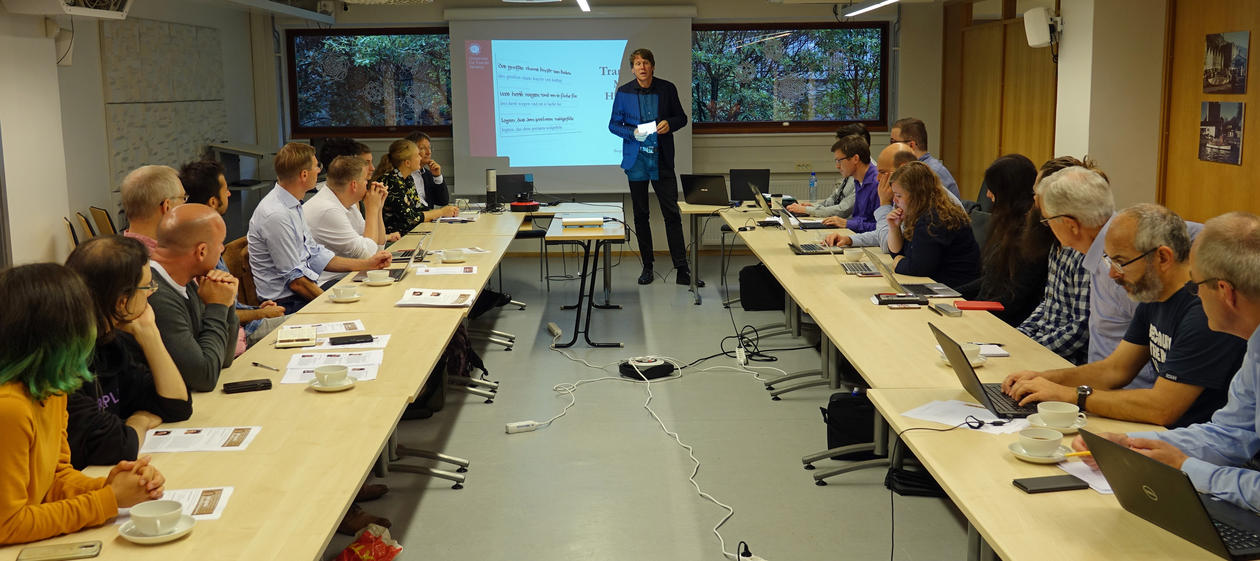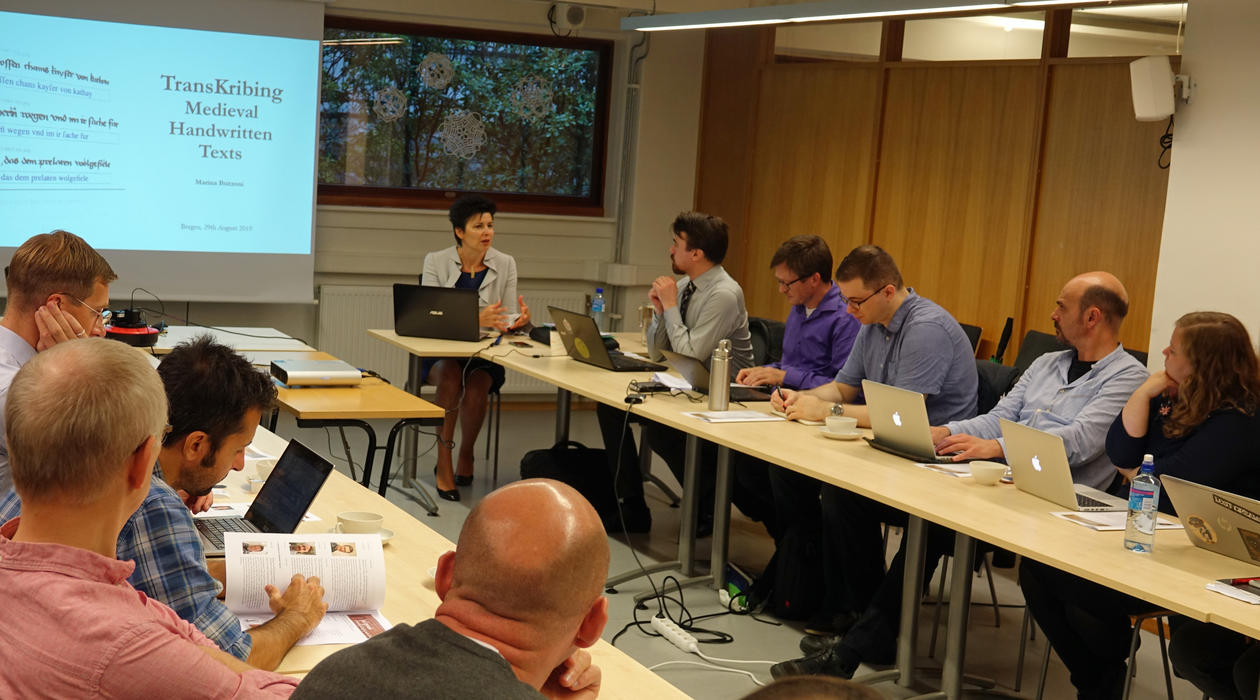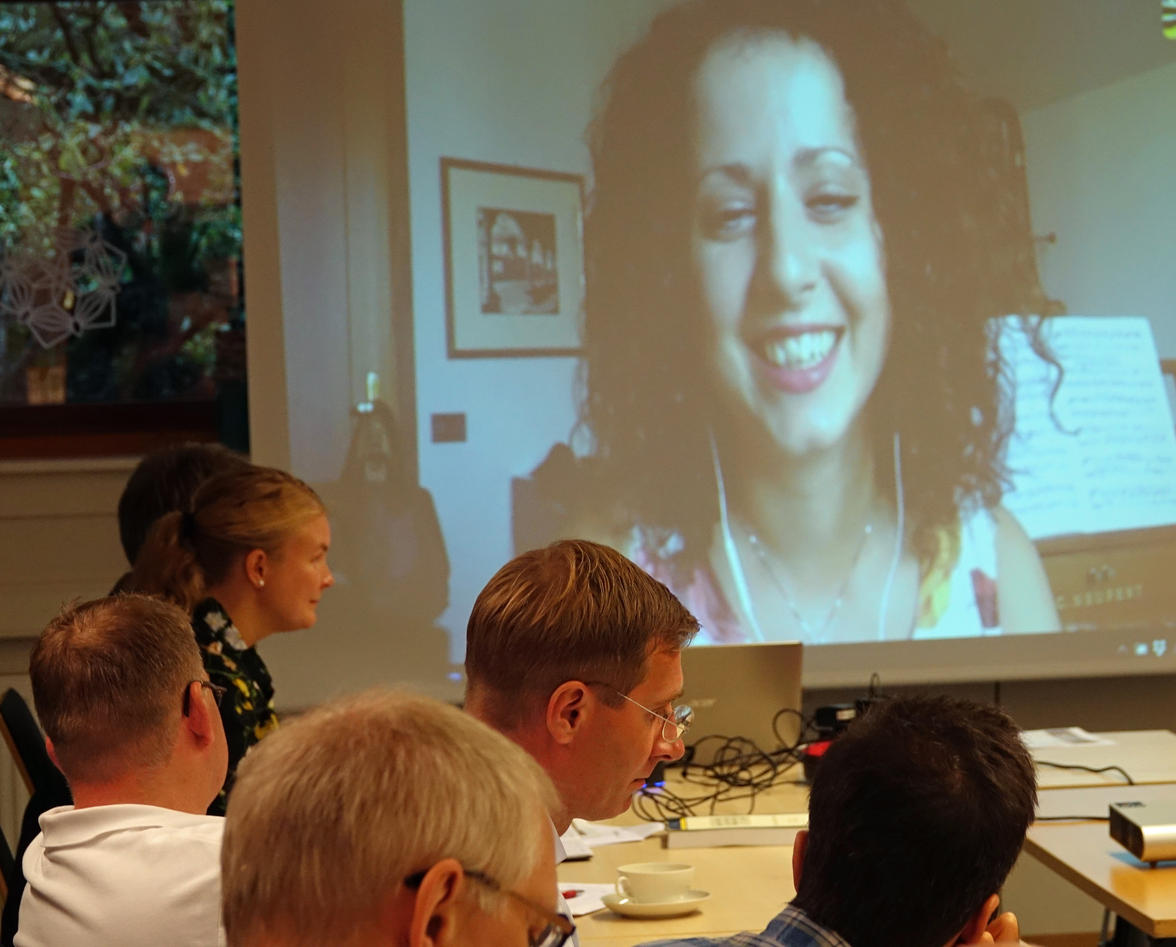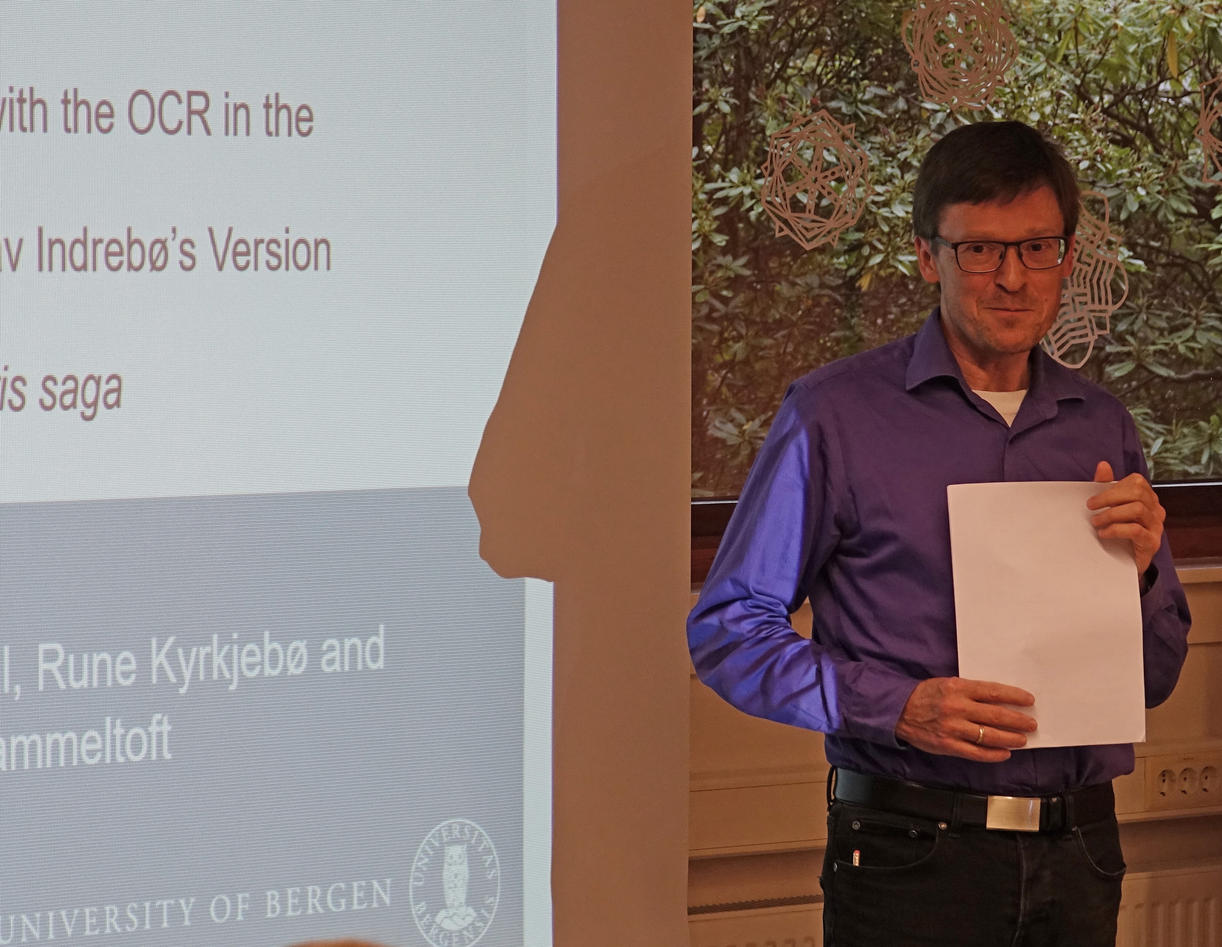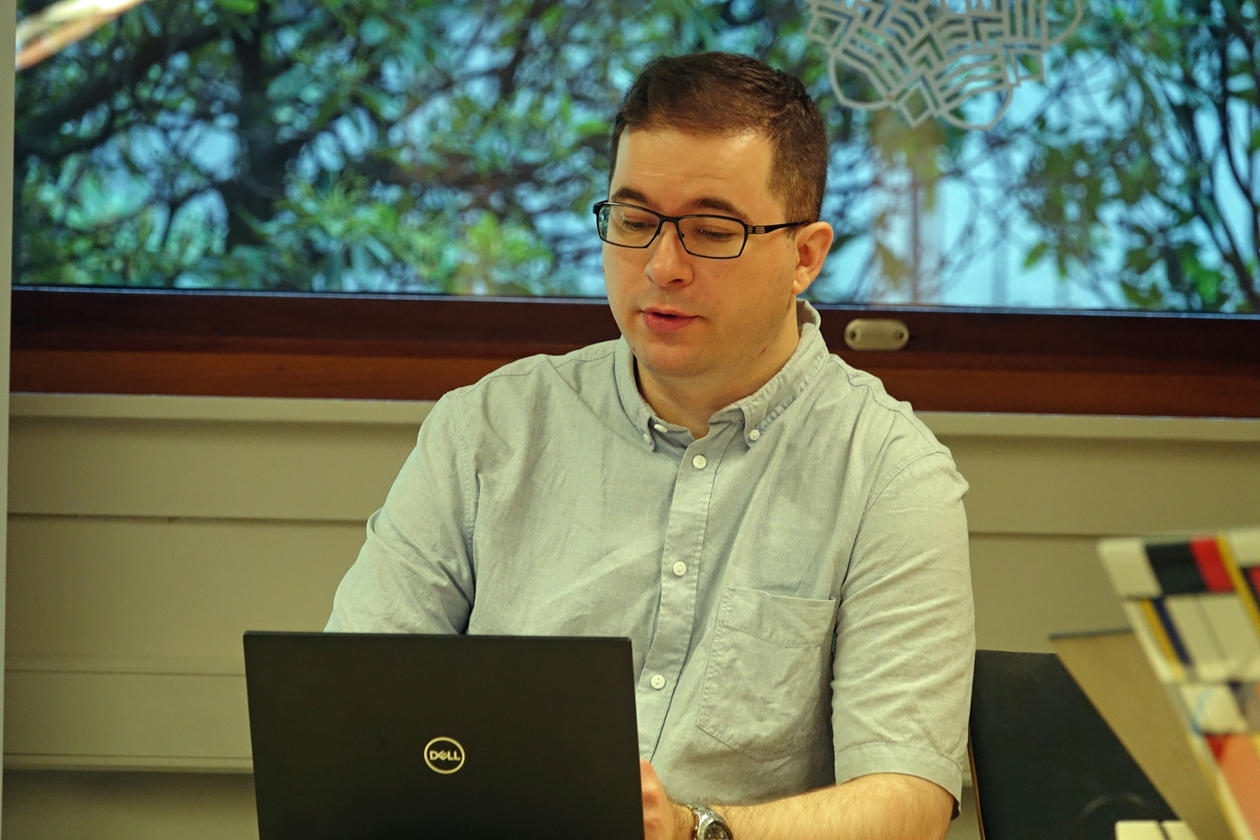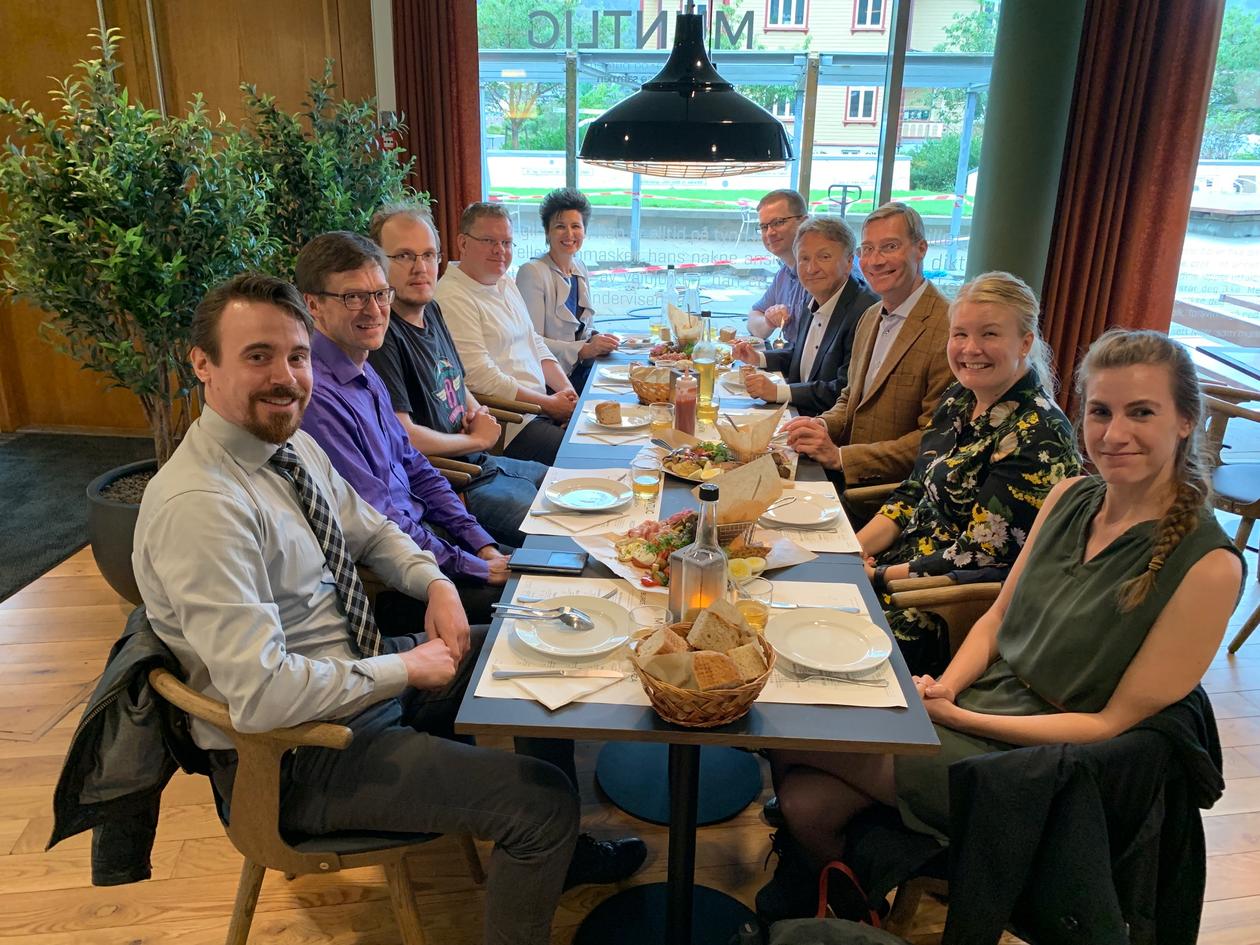Well-Attended Seminar on Tools and Methods in Digital Philology
The two-day seminar Digital Approaches to Transcribing and Analysing Medieval Texts, which took place in Bergen on the 29th-30th August 2019, brought together academics from seven European universities to exchange knowledge about current research in the field of Digital Philology.

Main content
The Research Group for Medieval Philology opened the autumn semester 2019 with an international two-day seminar on digital approaches and tools used within research on medieval texts. The seminar, which was organised by Odd Einar Haugen, Zuzana Stankovitsová and Nina Stensaker at the Department of Linguistic, Literary and Aesthetic Studies (LLE) was funded through a grant that the research group received earlier this year from the Faculty of Humanities. Among the invited speakers were researchers from Italy, Finland, The Netherlands, Iceland, Germany and the UK, as well as from the University of Bergen. Jørgen Sejersted, Dean of the Faculty of Humanities, opened the seminar, which was divided into three thematic sessions: Transcription Procedures, Preparation for Stemmatic Analysis and Stemmatic Analysis in Practice.
The first session began with Marina Buzzoni (Ca’ Foscari University of Venice) who presented and demonstrated Transkribus, a platform for the automatic recognition and transcription of hand-written documents. Transkribus is being developed at the University of Innsbruck and aims at building a large database of texts written in a number of languages and in various types of script, handwritten as well as printed.
Elisa Cugliana (University of Cologne), who joined the seminar through Skype, presented another tool using HTR (Handwritten Text Recognition), OCRopus, and guided the participants through the process of training the net with the help of a 130-word sample, to be able to analyse larger texts.
Rune Kyrkjebø and Øyvind Liland Gjesdal (both University Library in Bergen) presented their work on producing an electronic, diplomatic text of the early 13th-century Sverris saga from Gustav Indrebø’s outstanding 1920 edition using the OCR-reading software ABBYY FineReader 12. This version of the programme is able to distinguish between regular and italic characters, which is crucial for the encoding of abbreviations.
The first session concluded with Robert K. Paulsen (University of Bergen) presenting his own software MenotaBlitz (which can be downloaded here). The system introduces a simplified XML standard, which the software automatically transforms into a valid Menota XML file, thus making the transcribing of Old Norse texts both quicker and easier. A full tutorial is available as part of the Menota Handbook here.
In the second session, Joris van Zundert (Huygens Institute for the History of the Netherlands) gave an introduction into computer science for humanities scholars and illustrated how to input data and make it processable by the computer, from collating variants, through stemmatic analysis to graphic visualisation.
Afterwards, Marina Buzzoni (Ca’ Foscari University of Venice) returned as a speaker and presented her results from applying different methods of computer-assisted stemmatology, such as RHM, developed by Tuomas Heikkilä and two colleagues in Helsinki, NeighborJoining, NeighborNet, and Maximum Parsimony. She used seven manuscript witnesses to the Anglo-Saxon Chronicle tradition in order to demonstrate the strength of these methods.
On the second day, Bjarni Gunnar Ásgeirsson (University of Iceland) drew attention to the pitfalls of sampling texts for stemmatic analysis, possibly leading to inaccurate results, if informative passages are overlooked. His discussion was based on previous qualitative as well as quantitative analyses of the Icelandic Njáls saga and Snorra-Edda.
Alaric Hall (University of Leeds), the second speaker of the seminar to join through Skype, presented his stemmatic analysis of the late Icelandic Sigurgarðs saga frækna and discussed the use of stemmata for further research of scribal networks, proposing to create a “hyper-stemma” that would combine stemmata of multiple Old Norse texts to gain insight into how different texts were anthologised by scribes.
The programme was rounded off by Tuomas Heikkilä (University of Helsinki) who contrasted traditional and computer-assisted methods, discussing their respective advantages and disadvantages, and stressed the importance and necessity of artificial traditions for the further development of computer-assisted methods to increase their accuracy.
The seminar was well-attended both days, drawing participants not only from among the students and research staff at UiB, but also from abroad, as audience members came all the way from Sweden, Romania, Iceland and Austria. A total of 36 people had registered for the seminar.
The organisers would like to thank all the speakers and the participants, and last but not least the University Library for providing the meeting room with all facilities as well as the photographer Svein-Arne Selvik (as may be seen on this page).
